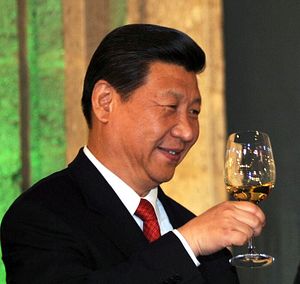2017 is a big year for the Communist Party of China (CPC). From now on, through thousands of personnel moves and administrative changes, the Party will be preparing for the Congress held toward the end of the year – the once-every-five-years self-appraisal when the top leadership positions will be decided. Despite its dramatic finale, however, this whole process will start from the bottom up – from shifts at the municipal, prefectural, and finally provincial levels, until it climaxes in what may well be a largely new Politburo, sitting atop this whole vast edifice. It will be the world’s most complex game of political chess, with a multitude of shifts and moves.
Since the Deng Xiaoping era, the Party has relinquished many areas of control. Just as the Chinese economy has grown more complex and varied under a process of managed (and highly tactical) liberalization, so too has the social and the political nature of the whole country. In Mao’s era, a primitive form of command economy sent out targets which were slavishly observed across the whole of the country in a system so pure even the Soviet Union, where it was originally launched, jettisoned it. The poor results of that approach (poverty, malnutrition, and largescale social failure) inspired the post 1978 changes.
If the CPC learnt one thing from that whole era (and, according to its current leader, Xi Jinping, the Party is a learning one), it is that it, and the government, cannot do everything. There need to be spaces and places for people and communities to act on their own. This flexibility meant that throughout the ’80s, into the ’90s and beyond, many ideas were pioneered at local level, and, when they worked, embraced higher up. The party-state rolled back its frontiers and let others move in. It has devolved more fiscal decision-making powers away from Beijing, and allowed provinces to invest abroad and construct their own Five Year Programs for economic and social development. In so many areas, localities in China have a level of autonomy never dreamed of in the past. The same goes for state-owned enterprises (SOEs) and other agencies once held under a central iron grip.
Despite this, as many have noted, what is so remarkable about China today is that this loosening of control economically and administratively has not been accompanied by any political relaxation. In fact, under Xi, the Party has never looked more unified and dominant. This has been achieved largely through the absolutely crucial final control the Party maintains a monopoly on – that of appointments. It has final say over who gets to have key jobs across China: Party leadership positions in universities, companies, and provincial governments. Loyal following of Beijing’s orders from this cohort means the rest of the system can be trusted to work its own merry way. Inability to control these foot soldiers means the Party itself is unable to properly function. Making the right appointments (and “right” in this sense means having loyal followers of the central Party line at all levels) is crucial.
In the last five years, the Communist Party cadre leadership cohort (and that does not mean the whole Party membership, now up to 90 million, but just those in significant leadership positions, who number in the tens of thousands rather than millions) has been disciplined by heavy doses of ideological training, and by the rigors of the anti-corruption struggle. Whatever their personal beliefs about Xi, the vast majority of them with any ambition know that for flourishing careers they need to go with the current flow. Those who have been most demonstrative and performed best in this task will, in the coming months, get their rewards. Less optimal performers will be shifted aside, retired off, or, in the most egregious cases, sent into the hands of the anti-corruption enforcers.
Power of appointment is one of the ways in which, even in the 21st century, the CPC still looks remarkably like a mini-kingdom within a country, rather than a part of it. The Congress at the end of this year will be a chance to observe how this extraordinary entity, the final major Communist Party with a monopoly on power, is able to survive despite all the changes in the society it presides over. In essence, through 2017 we will see the enigma of how the CPC operates over a terrain with enormous complexity, but manages this with the most elegantly simple of methods. The number of personnel changes will climb into the thousands, perhaps even hundreds of thousands. But despite all the diversity, the guiding principle of each appointment will be the same – loyalty to the simple message being proclaimed from Beijing, and largely through the mouth of the main leader, Xi Jinping.
The Party in 2017 is a phenomenon of organic control, a tactical body which focuses on only a few key areas in order to maintain what matters most to it – political power. Managing, and guaranteeing, the loyalty of those it puts into key positions is the most significant concern by far. There may be many uncertainties for 2017 in Xi’s China, from how to produce good growth to how to deal with the Trump presidency. But there is one thing we can be certain about in the coming year: 2017 will be the year when the loyal get their reward.

































